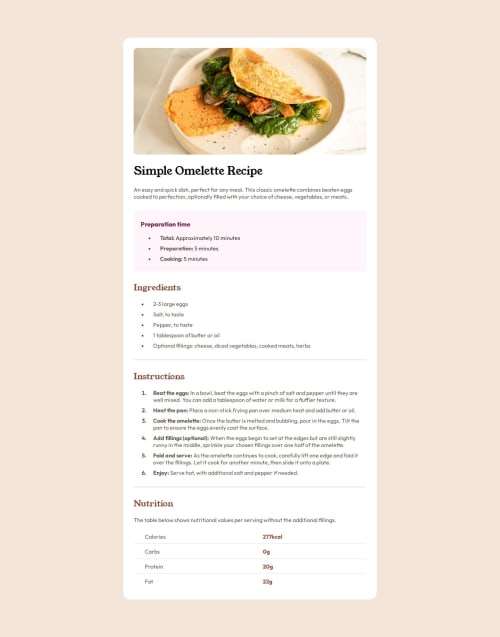Recipe page using HTML/CSS

Solution retrospective
I am most proud of being determined to find the correct solution.
What challenges did you encounter, and how did you overcome them?The challenge I encountered was trying to remove the last border from the table. I tried using the last-child pseudo class, but it was not resulting in the desired style. Before committing, I made one last attempt to remove the border, and it worked! I just needed to add td to the end. That is what I was missing.
What specific areas of your project would you like help with?The specific area of my project that I would like help with is, I noticed there is a split in the borders in my table. I am not sure why this occurred or how I can fix it.
Please log in to post a comment
Log in with GitHubCommunity feedback
No feedback yet. Be the first to give feedback on Erika Peterson's solution.
Join our Discord community
Join thousands of Frontend Mentor community members taking the challenges, sharing resources, helping each other, and chatting about all things front-end!
Join our Discord